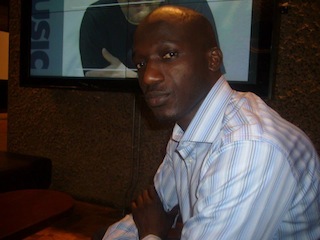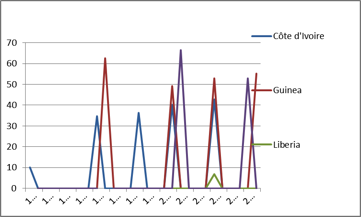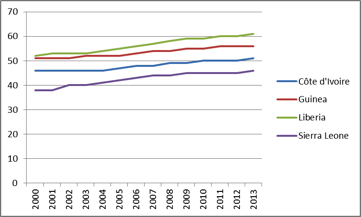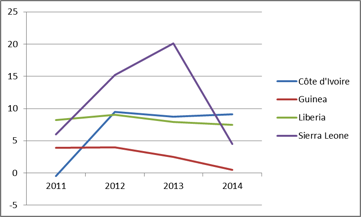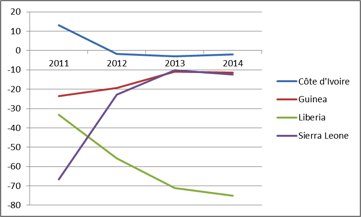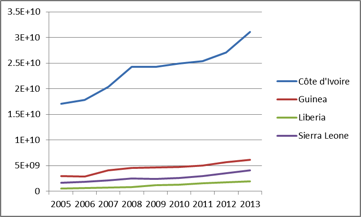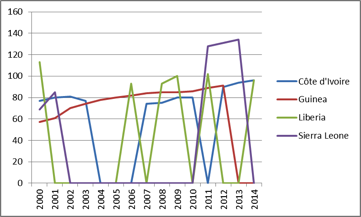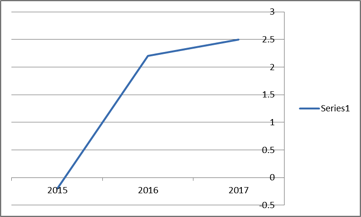-Nos 10 articles les plus lus
- 1) Le ‘’ Wassolon’’ l’empire Peulh du Mandingue
- 2) Comment Béchir Ben Yahmed et JAI arnaquent les dirigeants africains : Pays par pays
- 3) Ahmed Sékou Touré et ses Œuvres Syndicales
- 4) Général Charles De Gaulle à Conakry le 25 Août 1958
- 5) CRI DU 28 SEPTEMBRE DE LA GUINÉE - CONAKRY
- 6) La Guinée esquisse historique et géographique
- 7) Le 28 SEPTEMBRE ET L’IDENTITÉ NATIONALE GUINÉENNE
- 8) PREMIER MINISTRE DE TRANSITION : LE DECRYPTAGE ET LES PIEGES
- 9) EFFARANTE, DEROUTANTE GUINEE, MON PAYS !(1ère Partie)
- 10) La Guinée peut enfin dire qu’il existe bel et bien une communauté internationale
- Catégories
- Actualité Guinéenne (10)
- Chroniques 28SEPT (59)
- Communiques (2)
- Culture (1)
- Opinion Libre (99)
- Newsletter
- Temoignage 28Septembre
Vous souhaitez vous exprimer sur le thème du 28 septembre ?
Cliquer ici
- Partenaire
Devenir partenaire de mon site.
Cliquer ici
- Rechercher
- Archives
- Mai 2021 (1)
- Février 2018 (1)
- Novembre 2017 (1)
- Septembre 2017 (1)
- Janvier 2017 (1)
- Décembre 2016 (1)
- Octobre 2016 (2)
- Septembre 2016 (2)
- Aout 2016 (4)
- Juillet 2016 (1)
- Juin 2016 (2)
- Mai 2016 (4)
- Avril 2016 (2)
- Janvier 2016 (1)
- Décembre 2015 (2)
- Octobre 2015 (5)
- Septembre 2015 (1)
- Juillet 2015 (1)
- Juin 2015 (1)
- Mai 2015 (6)
- Avril 2015 (1)
- Décembre 2014 (1)
- Octobre 2014 (3)
- Septembre 2014 (6)
- Aout 2014 (5)
- Juillet 2014 (2)
- Juin 2014 (4)
- Mai 2014 (4)
- Avril 2014 (4)
- Mars 2014 (7)
- Février 2014 (3)
- Janvier 2014 (5)
- Décembre 2013 (8)
- Novembre 2013 (8)
- Octobre 2013 (10)
- Septembre 2013 (5)
- Aout 2013 (4)
- Juillet 2013 (1)
- Mai 2013 (4)
- Avril 2013 (2)
- Mars 2013 (1)
- Février 2013 (2)
- Janvier 2013 (1)
- Octobre 2012 (1)
- Juillet 2012 (1)
- Janvier 2012 (5)
- Décembre 2011 (2)
- Novembre 2011 (1)
- Octobre 2011 (4)
- Septembre 2011 (5)
- Aout 2011 (1)
- Juillet 2011 (5)
- Juin 2011 (1)
- Mars 2011 (1)
- Février 2011 (2)
- Janvier 2011 (2)
- Décembre 2010 (7)
- Novembre 2010 (5)
- Octobre 2010 (1)
- Septembre 2010 (5)
- Aout 2010 (4)
- Mai 2010 (2)
- Mars 2010 (1)
- Janvier 2010 (2)
- Décembre 2009 (2)
- Octobre 2009 (3)
- Visiteurs uniques
Visiteurs au total : 344263
Visiteurs d'aujourd'hui : 17
Visiteurs en ligne : 3
A Comparative Study of the Manor River Union Member States: with a Special Emphasis Given to Guinea – Conakry
Abstract
The paper compares and contrasts the member states of the Mano River Union, namely Côte d’Ivoire, Guinea, Liberia and Sierra Leone, with a special emphasis given to the second. The study compares and contrasts them in terms of economic aspects by looking at economic outlook of individual countries as well as their sociocultural and political aspects. Finally, overall conclusions are presented.
1. Introduction
The Manor River Union (MRU) is a sub-regional organisation within the Commission of the Economic Community of West African States (ECOWAS). In a sense, a sub-regional organisation is an international organisation that has to have the membership of more than one sovereign state who work and cooperate economically and politically to achieving or toward achieving set agreed common goals, objectives and aims, as well as solving their problems and overcoming their challenges, for mutual benefits and wellbeing of their peoples as an economically integrated and prosperous bloc. Usually, it is about genuine integration and dialogues amongst member states for resilient development. As far as the Mano River Union is concerned, a sub-regional organisation can be very helpful because it reflects common repetitions of civil wars, conflicts and political crises as well as development issues, especially from 1990s to present. Mano River union works alongside ECOWAS, African Union, the United Nations and most multilateral organisations.
The Mano River Union was established in 1973 by the two initiating member states, which are Liberia and Sierra Leone – headquartered in Freetown, Sierra Leone. Since then, it has had two more adherent member states; Guinea has joined in 1980 followed by Côte d’Ivoire in 2008. In fact, Mano River is a river taking its source in Guinea and forms borders between Guinea, Liberia and Sierra Leone.
All the four member states have got the same challenges or very similar problems, which are worsening slow economic wellbeing, socio-political instability, threaten peace and cultural degradation. Indeed, all member states of the Mano River Union (MRU) are in a tropical region of West Africa, who had been living comfortably before the arrival of Westerners – before slavery, colonisation and modern independent states. The here and the now; they were not bothered about the future and resilience in terms of development. Their geographical location and the climate bestowed them with that natural comfort, as they were abundantly harvesting throughout a year and they did not need to stockpile for droughts and starvations. Houses were mostly nondurable mud huts, where they did not have to worry neither about unpleasant cold weathers and extremely hot dry weathers of deserts. All they needed were things that would serve them their short term needs; they were not working to build for generations to come.
However, their current life style is a poor one in today measurements in spite the fact that they were very much satisfied then as those were what they knew. As far as back then, the term poverty has been relative. They have only realised their poverty after their contacts with the Western World and now globalisation – the money economy. Their life style was appropriate for rural nations. Conversely, today, with intense global competition, especially in terms of economies, the here and the now concept can no longer do these nations’ businesses; as there must be long-term development plans and visions to survive and to compete today for the now and the here as well as for the future in order for the nations to move forward and develop.
The Mano River Union covers a land area of 751,429 km², 1.3% of the total land area of the earth – they would be the fortieth largest country in the world right behind Zambia if they were a single country. MRU member states' territorial waters cover an area of 19769 km², about 2.63% of their land territories. The member countries have a combined population of approximately 4,4159,363 million people, 0.63% of the world's population in 2014. As in 2015, they would be the thirty first most populous country in the world – just right behind Spain if they were a single country. In 2013, the organisation's combined GDP was US$43,293,399,326 (US$43.3 billion) and its average GDP grown was 5.4%. If MRU were a single entity, it would rank as the ninetieth largest economy in the world, just right behind Tanzania – please refer to Table 1 below, the CIA World Factbook and the World Bank website as in References. This is just a brief analysis of MRU vis-à-vis the rest of the world, which is not the target of this study.
|
Table 1 |
|
||||
|
Countries |
Population |
GDP in BB |
% Grwt |
Land km2 |
Water km2 |
|
Cote d'Ivoire |
22,848,945 |
$31.06 |
8.5 |
322,463 |
4,460 |
|
Guinea |
11,474,383 |
$6.14 |
2.5 |
245,857 |
140 |
|
Liberia |
4,092,310 |
$1.95 |
2.5 |
111,369 |
1,5049 |
|
Sierra Leone |
5,743,725 |
$4.13 |
8 |
71,740 |
120 |
|
MRU Population |
44,159,363 |
|
|
|
|
|
MRU GDP |
|
$43.29 |
|
|
|
|
MRU Growth |
|
|
5.375 |
|
|
|
MRU Land km2 |
|
|
|
751,429 |
|
|
MRU Water km2 |
|
|
|
|
19,769 |
This study aims to make comparisons across the different member states of MRU to one another. A usual a key difficulty in a comparative research is that different types of data sets may be used in different countries. To avoid such problem, the data set to be used in the research are all sourced from the World Bank in order to minimise discrepancies.
In the paper the following points are addressed; economic aspects, political aspects, social aspects, technological aspects and a special emphasis given Guinea. Following these, the overall conclusions are provided in the final section relating to the study covered in this paper. . In other words, a comparative study of the Manor River Union member states with a special emphasis given to Guinea–Conakry are covered by this research.
2. Economic Aspects
Economy refers to wealth aspects of a nation, a region or the world. It depends hugely on the aggregate production of goods and services, the aggregate consumption, the government spending, the private investment and the net exports – after adjustment of imports, and it is
usually evaluated quarterly and yearly. These elements compose the gross domestic production (GDP) of a country. Usually, the size of a GDP explains how wealthy a nation is, and how performing an economy is. Its formula is GDP = aggregate consumption + aggregate investment + government expenditures + net export, which is exports less imports.
There is a similar measurement for the economic performance of a nation, which is slightly different from the GDP concept. On one hand, a GDP shows the economic performance within a country, on the other, it does not specify that which amount of the aggregate wealth belong to the nationals of a country, which amount of the aggregate wealth belong to the foreigners operating, investing in a country or the earnings and investments of nationals of the country concerned abroad. Indeed, the real measurement of a country’s wealth performance is by considering/ adding economic performance of its citizens abroad into a GDP less foreign economic performance in a GDP, which is called a gross national product (GNP). Its formula is GNP = aggregate consumption + aggregate investment + government expenditures + export + foreign production by a country’s companies – domestic production by foreign companies within a country. However, the GDP method is used by governments to measure economic performances of their economies instead of GNP. Nonetheless, a good GDP does not grantee the wellbeing of a people; the wellbeing of a people depends on equitable distribution of the nation’s wealth. In fact, this section looks at economic status and performance of MRU countries.
2.1 Economic Outlook of Côte d’Ivoire
Côte d’Ivoire is the richest country in MRU and the third largest economy in West Africa, behind Nigeria and Ghana. The country is the largest cocoa producer and exporter in the world. Fortunately, the country has been recently much stable with increasing GDP around 8% on average per annum thanks to good economic policies of reconstruction initiatives, relatively stable political environment and flows of foreign direct investment – good governance. However, like all of the MRU countries, Côte d’Ivoire economy is very much undiversified as it depends on agriculture and this industry employs about 75% of the population. The country’s sub-agricultural sectors are cassava, cocoa beans, coffee beans, palm oil and yam. The lack of diversification has made the country’s economy very vulnerable due to fluctuation in commodity market and the drop in rain falls because of the global warming. Côte d’Ivoire also exploits some oil/ petroleum. Its economy is heavily dependent on exports of cocoas, coffees, minerals and palm oil for its trade revenue.
2.2 Economic Outlook of Guinea
Guinea is a rich poor country and, surprisingly, the second richest in MRU. It is potentially rich in a sense it is a country of minerals, solar power, waters for hydroelectricity need both for domestic consumption and exports to neighbouring countries and agriculturally fertile. However, it is very poor in a sense that the people do not have their basic needs satisfied even. Its main exports alumina, bauxite, diamond and gold to industrialised nations and also exports agricultural products to its northern neighbours. Its economic uplift depend on constructions of hydroelectric power plants, roads, schools, hospitals, providing clean running water, combating corruption, reforming the security sector and properly regulating its private sector. Guinean economy is essentially based on the mining sector, namely bauxites, diamonds and gold. The country has about 2/3 of the global bauxite deposits. In addition, agriculture, fishing and cattle farming are also vastly dealt with at both peasant level and at small and medium sized industrial scale.
There is a prospect of foreign director investment flows into the country but the current political climate is very discouraging for investor. The Guinean economy is very vulnerable and undiversified. Fluctuation and decreasing prices of exported mineral raw materials and the political instability are the major menaces to Guinea economy along with the current Ebola outbreak.
2.3 Economic Outlook of Liberia
Economically, Liberia is the least developed economy in the Mano River Union and deeply depend on foreign aids. However, Liberia is potentially rich in terms of natural resources, such as minerals, rubber plantations, forestry, water and fertile cultivable lands in abundance. The country has been crippled by more than a century corruption, ethnical orientation of politics and the civil war. However, the economy gradually growing from 2006 to 2013, before the Ebola epidemic, thanks to improved governance and its commodities’ prices increases in the global market. The Ebola outbreak almost brought the country to its knees, just to the brink of a collapse due to inability of the government to combat the deadly virus. At last, the outbreak has been won thanks to foreign assistances.
2.4 Economic Outlook of Sierra Leone
Sierra Leone is the third largest economy in MRU. The country has been ruled by twelve regimes – six of them juntas. The country was the victim of eleven years of an incomprehensible brutal civil war backed by the then Liberian rebellion. As of 2002, Sierra Leone has been stably peaceful, democratic, reconstructing its economy and infrastructure as well as combating Ebola since 2014.
2.5 Poverty Headcount Ratio at National Poverty Lines (% of Population)
The graphs in Figure 1 below are about poverty headcount at national poverty lines according to the percentage of population of the four Mano River Union member countries, from 1985 to 2012. The sets of data are sourced from the World Bank website, countries and economies. The unavailability of the data in some of the years is very well noticeable as the graphs drop to zeroes, which should not be the case. There are four graphs in the figure. The blue graph shows the poverty headcount percentage in Côte d’Ivoire, the red shows the same trend in Guinea, the green is about the Liberian pattern and the purple one reveals the Sierra Leone case. When the data availability is taken into consideration, in 2003, Sierra Leone experienced the highest increase in poverty headcount by 66.4%, which is the highest in all the years in all the countries; whereas Liberia saw the lowest increase in poverty headcount by 6.8% in 2007. If the data accessibility is to be considered again, Guinea knew the second highest poverty headcount in 1994; whereas Côte d’Ivoire suffered the second lowest poverty headcount in 1985, 62.6% and 10.1 respectively. However, these sets of data cannot show that there are more rich people in Liberia than in any other countries and, at the same time, they cannot justify that there are more poor people in Sierra Leone than in other states. So, there are more factors to be considered, especially given the unavailability of data for all of the countries in many of the years.
2.6 Life Expectancy at Birth, Total (years)
The graphs in Figure 2 deal with total life expectancy at birth in Mano River Union Member states from 2000 to 2013. The sets of data are sourced from the World Bank website, countries and economies. The trend shows an overall increase in life expectancy in all the four countries. In fact, the Liberian people in general live the longest from 52 years in 2000 to 61 years in 2013; followed by Guinea from 51 years in 2000 to 56 years in 2013; followed by Côte d’Ivoire from 46 years in 2000 to 51years in 2013; and sadly Sierra Leoneans lived shorter during these thirteen years according to the data provided from 38 years in 2000 to 46 years in 2013. Arguably, the living standard in Liberia is the best possibly because they are the most health conscious; they probably have the best healthcare; and they probably have the largest amount of food stocks for sustainability or have the best step food agricultural policies; followed by Guinea, then Côte d’Ivoire. Unfortunately, the verse of the situations in Liberia is probably true in Sierra Leone.
2.7 Annual GDP Growth (%)
The line graphs in Figure 3 clearly show annual GDP growths in Mano River Union counties from 2011 to 2014. In fact, Sierra Leone experienced a sharp economic growth from 6% in 2011; to 15.2% in 2012; then to 20.1% in 2013. However, this growth was severely slumped to 4.5% due to the Ebola outbreak. Next, Côte d’Ivoire emerged from the recession and the negative growth of -0.47% of the civil wars in 2011, then to sharp steady growths from 2012 to 2014, 9.5%, 8.7% and 9.1% in that order. Further, the Liberian economic growths had been stable despite the Ebola effects. The economy grew at 8.2% in 2011, followed by a slight increase in 2012, then a mere decline in 2013 to 7.9%, after that there was an Ebola year of 2014 slender decrease to 7.5%. Finally, Guinea experienced petty economic growths from 2011 to 2014, 3.9%, 4%, 2.5% and 0.5% in that order. The tendency in Guinean economic growth can be explained partly because the country has never experienced a civil war. It is, perhaps, because of the civil wars Côte d’Ivoire, Liberia and Sierra Leone benefited from foreign donations and aids, which helped boom their economies. Similarly, Guinean economy is very mineral based. The government revised all the mineral contracts after the regime change in December 2010, which slowed mining exploitations and caused many mining companies to leave the country. In addition, political situations of the three countries are much more stable than in Guinean. There have been series of violent political demonstration in Conakry, the Guinean capital city, for the last few years. Moreover, the outbreak of the Ebola has further penalised the country. Finally, it could be also because the three countries have better economic policies and better governance than Guinea.
2.8 Current Account Balance, %GDP
The graphs of the Figure 4 below compare the current account balances in the four countries from 2011 to 2014, which can be surpluses, balanced (zero), or deficits as they are the differences between national savings and investments. National savings and investments can be influenced by competitiveness, forex traits (exchange rates and foreign currency reserves), inflation rates and mainly trade balances. Surpluses mean that economies are independent, growing and lending; deficits mean economies are dependent, not doing very well and they are borrowing. In fact, as it can be obviously seen from Figure 4, all the four countries have been in red (deficits) for the four years except Côte d’Ivoire in 2011 only. The case of Côte d’Ivoire in 2011 was certainly because the decade long civil war made the country accumulate and pile up stocks of unsold agricultural commodities, especially cocoa and coffee beans, which were exported in 2011 and that is why there was a 13% surplus of the current account balance of GDP. Likewise, despite Côte d’Ivoire had deficits in the subsequent three years onward, it had much lower current account balance deficits, of -1.7, -3 and -2.1 compare to other countries, which shows that it is apparently the richest of the four. Further, Guinea in the midway had been improving with -23% in 2011; -19.4% in 2012; and then to -10.9% in 2013; before slightly worsening in 2014 to -11.5%. The improvements in Guinea, in the first three years, are certainly due to its better agricultural policies of the step food rice improved agricultural policies and decreases of this commodity; however the slight increase of last year’s is definitely something to do with the decline in rice farming due to Ebola. Besides, Sierra Leone had been improving, at the similar trend as Guinea, with -66.6%, -22.9%, -10.3% and then -12.5%. However, the current account of Liberia had surprisingly falling, at a free range, from -33.3% in 2011; -55.8% in 2012; -71% in 2013; and then -75% in 2014. The worsening Liberian current account balance is certainly due to sanctions on its mineral and agricultural exports.
2.9 GDP Current (US$)
The graphs, Figure 5, are concerning the GDP Current of the four Manor River Union Member States from 2005 to 2013. In fact, although the GDPs of all the four countries are growing, the figure noticeably highlights the gap between Côte d’Ivoire and the rest of the member states. The GDP of Côte d’Ivoire is three times higher than the combined GDPs of the rest. As of 2013, Côte d’Ivoire had a GDP of US$31.06 billion from US$17.0 billion in 1985; Guinea had a GDP of US$6.14 billion from 2.94 billion in 1985; Sierra Leone had a GDP of US$4.13 billion fromUS$1.63 billion in 1985; and Liberia had a GDP of US$4.9 billion from US$0.54 billion. The economic integration is in their benefits for much bigger market, more range of aggregate demands and supplies, possibility of more modern infrastructure and industries, the possibility of increased effectiveness and efficiency, more choice for consumers, more aggregate wealth and, perhaps, more welfare. However, these growths might not make much differences if the inflation and purchasing power are to be considered.
3. Sociocultural and Political Aspects
Sociocultural aspects refer to the combination of the two factors, social and cultural, in terms of appearance, difference, nature, quality, perception and psychology, which contribute to interaction of cultural and social components of communities in nations, as in the case of MRU. They are realities and understandings that make effects on behaviours of communities in nations like the concerned union in this study. The governments and politicians of the four countries have got to take into account different sociocultural factorial aspects in educating the communities, which should be their targets to maintain durable peace and development.
Even if sociocultural environment is natural peaceful – probably and arguably like it is in MRU, factors that affect its relations and tolerance must be carefully managed, such as religion, ethnicity and linguistic consideration. This is because MRU is multicultural in a sense that it member states are made up with different ethnic groups, religions, languages and sub-geographical locations, almost with different cultures even though they are similar. Racism exists in many societies and it still remains an insidiously destructive force which tears the fabric of many societies apart, as such, it cannot be condoned or passively accepted, international measures to combat this vicious social decease should be “genuinely and seriously” initiated right away if the world is to evolve into a peaceful and harmonious habitat for its citizens in the Third Millennium (Slabbert, 2014). In addition, sociocultural differences should be used in positive ways for diversity, tolerance and coexistence. Longe et al (2014) state that a culture without doubt is a significant element of every society based on the fact that it explains history and defines the uniqueness of such society.
Max Webber’s concept of bureaucracy is applicable to political establishments, which views a government as an organisation with a centralised procedure in large establishment, where fairness and transparency are guaranteed in treatment of people and end results. Webber also advocates for equitable distribution of resources. From this, it is obvious that the core of bureaucracy is about equality, impartiality and objectivity. In other words, bureaucracy is about justice in a right organised way of private and public affairs.
The essence of bureaucracy is to allude to neutrality and its main objective corresponds with the basics of rule of law that results to public interest and confidence in a system (Nonye, 2014). Nonye (2014) goes on to argue that bureaucracy functions to serve the need of all equally, by treating similar cases alike, based on predetermined criteria, where work methods and procedures should be determined by written rules and filed records, which can serve as precedence. Equality, neutrality, objectivity are some measures of justice in distributing a nation’s wealth directly and indirectly in terms of income at individual levels and general national living standard. Governments should respect bureaucracy in their discipline, promotion, employment and remunerations for the sake of national development in terms of accountability, effectiveness, efficiency and transparency – good governance.
Political systems of Mano River Union member states are based on the Western indulge system but in very unorganised ways and much less ambitious approaches are applied. Unfortunately, all four member states have very similar causes of political instability; namely, ethnicity, corruption and differences in religious beliefs.
Ethnicity is a sense of nationhood, wherein political leaders of an ethnic group thinks of itself as a nation within a nation (Longe et al, 2014). The four member states are all multi-ethnic and bi-religious nations. The experience of Mano River Union nations, grounded on ethno-religious challenges has led to civil wars, conflicts, political crises and violence, and these have been worsening from foundation of the concerned nations to today. Ethno-religion fragility has been exploited as political opportunities, which has nurtured violence and make it as an identifying political culture in the MRU nations.
Lack of honesty – corruption – is the core cause of all the vices and that is why the member of Mano River Union are in situations they are in today. Constitutional violations for political gains, blackmails and murders, embezzlements and unfair distribution of public resources have been white spread problems in member states of the MRU over decades. Politics is, unfortunately, seen as the way of wealth creation for politicians, which is the total opposite of politics – politicians come into politics to serve peoples but not the other way round. Because of the epidemic of corruption, sometimes, some member states are unable finance government projects from national budgets. In some cases, aids’ financed national project contractors fail to honour their contracts – payments fulfilled but no deliveries. Such environment drives foreign and serious national investors away and creates socio-political frustrations. Sano and Narongraksakhet (2014) highlight that the problems are the result of decades of economic neglect, lack of employment opportunities for the peoples in both public and private sectors, cultural insensitivity of the bureaucracy and the non-recognition of the religious, linguistic and cultural diversity within politics. A resolution to these problems requires greater efforts by the governments to respond to the demands of the populations, which would contribute to building peace and stability (Sano and Narongraksakhet, 2014).
3.1 Sociocultural and Political of Côte d’Ivoire
Côte d’Ivoire had a decade of political / crises and a civil war, during which the country was divided between the rebels’ held north and the government held south. In fact, the country gained its independent from France in 1960. It had been rule under one party system until the coup d’état in December 1999 despite the fact that it accepted the multiparty democracy in 1990s. The incumbent junta leader was ousted by popular demonstration because he declared himself the winner of a rigged election. Furthermore, some dissatisfied members of the Ivorian army failed to seize in an attempted coup d’état on 19 September 2002, which then escalated into a civil war, as explained above, until April 2011. The Ivorian civil war ended thanks to France and the UN peace keeping forces helped to depose the president, who had been in the office from 2002 to 2011, after a post electoral crisis, where the international community believed he lost in the run-off election, where his opposition benefited from coalition with the third place party in the first election. The civil war prolonged because of lack of consensuses and the lack of respect of what had been agreed and signed in series of political negotiation.
The nature of the Ivorian civil war is ethnic, nationalistic and religious between the northerners and the southerners. The southerners are mainly Christians belonging to different ethnic groups; whereas the northerners are mainly Muslims, they belong to an ethnic group that exists in most West African states especially the northern neighbouring countries of Côte d’Ivoire and this make them, the northerners, to be perceived by the southerner as foreigners and that is why the current president was not allowed to run for president for so long.
3.2 Sociocultural and Political of Guinea
Guinea gained its independence from France in 1958, which resulted in a bitter relationship between the two countries during the authoritarian regime of the first republic for twenty six years. Though the first republic of Guinea developed a number of factories for, mainly, agricultural produce transformation processes it failed to develop any major infrastructures for the long term development. For example, there were no major inter-prefectural road built, damns building for hydroelectric supplies, adequate running water supplies and other long term development initiatives. All of a sudden, there was a regime change in a bloodless seize of power by the military after the death of the Guinean first president in March 1984, which resulted in military rule of the second republic for twenty five years. There were neither clear economic ambitions nor plans for the development of the country under the second republic. The second president passed away in December 2008, which was followed by an other bloodless seize of power by the army. The ruled for two years of political transition from military rule to civilian constitutional rule, thanks to the pressures of the international community. Thankfully, Guinea has got an elected president since December 2010 at last for a five years’ term, but marred with a lot of violence and ethnic clashes. Under the current democratic rule, there have been political crises resulting in violent demonstrations and riots due difficulties in getting the electoral consensus between and the regime and the opposition. The political orientation in Guinea is very ethnic.
From 1990 up to now, multiparty system has been adopted and there are more than two hundred political parties with no clear political belongings; their militants follow them upon ethnical and communitarian bases. This sad description is due to low rate of education amongst the citizens.
3.3 Sociocultural and Political of Liberia
Liberia is an independent state from its creation in 1822, peopled by the indigenous inhabitants and the African–American settlers of the free slaves from diaspora. Ever since, the country had been ruled by the American-Liberians until a coup d’état toppled their regime in 1980, which unfortunately gave a chance to the first indigenous rule for about ten years. In late 1989, a rebellion led by a member of American-Liberian attacked the country and lasted for fourteen years, where the rebellion succeeded in assassinating the indigenous military ruler and seized the power in an election after the ECOWAS’ ECOMOG peace keeping force intervention in 1997. In 2000, an indigenous rebellion waged a civil war until the Monrovia regime collapsed in 2003, followed by a two years’ transition resulting in election of the first African woman president serving her second and the last term in office. The heavy task today is to reconstruct the country socially, economically and, of course, infrastructural reconstruction. The nature of civil wars in Liberian was ethnic and, somehow, religious.
3.4 Sociocultural and Political of Sierra Leone
The economy of Sierra Leone is very feeble despite its potentialities. The cause of its current economic situation is mainly to do with its civil war. The country is naturally bestowed by the nature. It has got fertile cultivable lands for agriculture; it has got huge deposits minerals, fishery, forests and waters. It only exports minerals, which make it vulnerable to international price fluctuations of its commodities. Its already appalling economic situation has been worsened by the widespread of Ebola virus.
4. Infrastructure and Technological Aspects
Infrastructure and technologies are very important aspects in building a regional economic integration like MRU. Some of infrastructural and technological issues are due to lack of adequate transport system and very limited accessibility of the vast majority of population to modern technologies as well as lack of processing plants for most of their raw materials. The relationship between infrastructure, technology and industrial development has always been a matter of concern to researchers, planners and policy makers, there are interests to agree in principle that for sustainable development to be achieved, infrastructure and technology have to be continuously improved and developed (Ng'ang'a, 2012).
Infrastructure development paired with modern technologies is the backbone of the modernity and real durable economic and human development in countries like MRU member states and for any ambitious nations. MRU is very underdeveloped in terms of primary infrastructure such as factories for processing raw materials, roads, power supplies, water supplies, developed agricultural lands with facilities, hospitals, rubbish collections and management, transportation and schools for developed human capital equipped with modern technology tools and knowhow. Ng'ang'a (2012) reasons that infrastructure and related services are necessary to help attain wellbeing of citizens, which is the main goal of governance, whether central or local, to deliver basic services to end-users, be they poor, rich or middle income.
In the MRU level, Côte d’Ivoire has a superior infrastructural and technological advantage over the rest member states. This does not mean Côte d’Ivoire is developed but the rest of MRU members can inspire themselves and learn from it. On the other, Côte d’Ivoire can help the other three states in terms of experience, knowhow, investment, trade and resources for sub regional integration and development. Infrastructure feeds and is fed by trade, it fuels direct foreign investment; it backs up the creation and sustainability of industrial clusters, at the same time, infrastructure and its related services, i.e. technologies, cuts costs and raise competitiveness (Ng'ang'a, 2012). Adequate modern infrastructure and technologies pave ways for increase superior productivity in terms of effectiveness and efficiency, which are the techniques for sustainable balanced economic growths in MRU by creating sustainable markets both sub regionally and globally. Adequate infrastructure and modern technologies build up the conditions for more employment, income and prosperity, where you have access to quality ports, airports, railways systems and networks, roads, power supplies, communications, water supplies, sewage management, waste management and information technology (Ng'ang'a, 2012).
4.1 School enrolment, primary (% gross)
Figure 6 below illustrates the gross primary school enrolments, in percentage, in the four member states of MRU from year 2000 to 2014. There are so much missing data for many of the years. However, given some consideration to the trends of available data, it can be argued that Sierra Leone had the highest gross primary school enrolment, followed by Liberia, then Guinea and, lastly, Côte d’Ivoire. However, the outperformance in Sierra Leone and Liberia over 100% could have been because they had had underperforming negative primary school enrolment in some of the years, but there is no data to prove that.
The primary school enrolment is a very important factor in helping to get the right human capital for future development, be it infrastructural or technological.
6. A Special Emphasis on Guinea as a Member State of MRU
6.1 The Economy
The economy of Guinea is weak and vulnerable. It is weak and vulnerable because of its small size; its low growth; it is import based; and its mineral dependency. That is, Guinea needs an economy that is diversified and with sustainable growth. Further, economic environment of Guinea tends to be controlled by imports of informal businesses, most of which are not registered and they avoid paying taxes, and the government relies enormously on aides donations from wealthy nations, regional association and international organisations. Besides, the tertiary sector is predominant in the economy in commerce and retail management of import goods and this sector is dominated by individuals in sole trading. For these to be changed, the government needs to encourage and help entrepreneurship and industrial development for domestic production. At the same time the government needs to invest more in electricity, water supply, waste management, sewage management, information technology and roads. The country has to be investment friendly and nurture innovation. The Guinea economy will continue to suffer as long as the country remains net consumers.
Despite of what have been mentioned above, the economic environment of Guinea is relatively improving when the current regime is compared to military rules. The inflation is somehow controlled and down, the purchasing power is relatively up and the agricultural production is up. However, the Ebola outbreak has crippled the economy by decreasing domestic production and discouraging investors, especially the US$35 billion concession of Rio Tinto SIMFER for Guinea, the transnational railway project from South-eastern Guinea to its southern coast – the Benty deep-water port projects – thousands of employment and domestic subcontracting opportunities lost. The Ebola has forced the economy into a recession. If the Ebola had not been there and all these projects were honoured, the Guinea economy would have grown to around eight times its current size all over sudden. However, the unfortunate Ebola epidemic has been allegedly poorly managed by the government and worsened by the communities’ lack of full and proper cooperation. If they are really serious, it is something that can be overcome in a very short term, like it has happened in Liberia.
To further elaborate on Ebola’s negative impact on the Guinean Economy, Figure 7 below shows the World Bank’s forecasted annual percentage of GDP growth of Guinea for 2015, 2016 and 2017. If the forecast holds, Guinea will be the only country in MRU to have a recession this year, 2015, with a mere negative growth of -0.2% growth, which means the country is in the red and economic performance of 2014 is slightly higher than that of 2015 certainly because of Ebola effect, perhaps the country has had less aides and donations compare to the other two affected countries. Nevertheless, the economy will be slowly growing at 2.2% and 2.5% in 2016 and 2015, respectively. With cooperation from both the government and the public, Ebola can be eradicate and be in history.
Technology and electronic development are suffering from both lacks of electric current and sustainable budgets in Guinea. No power, no finance, no research so, no industrialisation.
Mano River Union have as main goals to strengthen ties and integration between member states in all possible fields; be it economic, cultural, infrastructure and security in order to have a perfect progressing peaceful neighbourhood. So, within these frames, Guinea should contribute for the achievement of every single goal and facilitate their implementation. However, benefits would only come if each member state fulfils its obligations towards the union.
6.2 The Politics
Politically speaking, the purpose of politics is to unite a nation for forward looking; unfortunately the trend is reverse in Guinea – the politics in Guinea is divisive and deteriorating. Kaké (2015) has been able to show examples of very convincing realities why Guineans are politically irresponsible. He started with the Guinea geography taught in schools across the country. Children are taught that Guinea is “divided into four natural regions”; which should otherwise been taught a “Guinea is composed of four natural regions.” Being divided is having disagreements and the question of ethnic background of the president has divided Guinea since its birth. Thus, Guinea has been politically divided along the ethnic-regional lines since independence and it has been divided to rule it deceitfully. Consequently, the nation is ever disunited and broken up.
Kaké (2015) further argues that he does say that he does not know the answer when he is asked about the percentage of Muslims in Guinea, but he does know the percentage of Guineans born Muslims. This is because he is confident that the dilemma and the challenges facing the Guinean state for many decades would have not existed in the first place if there were about 90% of believing Muslims as claim. He cited the following verses:
However, being Muslims do not make rulers or citizens good or bad, as every human being dreams to have a world of justice, wellbeing and peace. The most important is the sense of morality to rule or to be citizens. If leaders are seriously engaged in honouring their political promises and obligations, then they will do their best to fairly conduct the nation in the right direction. Guinea is a multi-faith society; it has, officially, 85% Muslim, 7% Christian and 8% indigenous beliefs. All these faith groups share the same legal constitutional values, in another Guinea that is, officially, secular and not ruled by the Islamic Jurisprudence. Further, there is an impression that it is the fault of Muslims and that is why the situation is not getting better, as they are the majority and have been ruling the country since its independence except for one year – from December 2008 to December 2009. Arguably, the communities fighting over the political power are nearly 100% Muslims, if they had put their ethnic differences away and consider each other as fellow Guinean compatriot Muslims, they would have a common ground and, then, the problems would have been solved. Similarly, it could be humbly argued that the emphasis could be made on the leadership alone and the respect of laws.
“The believers are but brethren, so make settlement between your brethren. And fear Allah that you may receive mercy (Al-?ujur?t 49:10).”
“And hold fast to the Rope of Allah all of you together and be not disunited… ('?li `Imr?n 3:103).
The above verse is about dialoguing and reconciling. In fact, true believers are like brother and should have good relations with their fellow brothers, though brothers can have differences, which are parts of human natures, those differences must be resolved for common benefits. Disputes amongst fellow brethren must neither be violent nor bloody.
Kaké’s assertion is very justifiable in the case of Guinea. That is, there are Muslims in Guinea by label but there are very few true believers amongst them. Recourse to violence, oppression, killing, injustice, tribalism, hatred and any other forms of harm and antisocial behaviours are prohibited in Islam against humanity. He maintains that Islam urges Muslims to be united as cited in the second verse above. However, he points out the citizens have obligations and rights. Their rights are barely respected in Guinea. The breach of their fundamental rights is clear, as they do not have access to some basic necessities, i.e. adequate electricity supplies, adequate safe running water supplies, clean neighbourhoods and affordable quality health care services. Thus, it is fair to claim that the problems of Guinea lie with the leaderships and scholars/ intellectuals – people who run the country. The country has been very unlucky in terms of getting quality leadership as there are no clear directions for solving the problem for forward looking. However, Kaké goes on to show that the public also has its share of the obligations by being disorderly and not obeying the authorities, which go against Islamic teaching as he referred to the verse below.
“Oh you who believe! Obey Allah and obey the Messenger, and those of you who are in authority…( An-Nis?' 4:59)”
Obeying authorities is an obligation in Islam. The authorities are guarantors of order, law and peace, which differentiate human societies from those of animals in the jungle. Unfortunately, the political scene has weakened the social ties to some extent, but the communities have largely the same values and norms that keep them together all the time, that is why the state has been at brink of collapsing but it is been spared from civil war experiences of its neighbouring countries of MRU and the others. As such, Guinea should promote peace and stability in the MRU, to encourage more economic integration and initiates common project in area such as electricity and infrastructure.
Adequate electricity supplies can convert the current trend and vitalise the economy and it can even export energy to its neighbouring countries and hunger of the youth to learn modern technologies can be eased. Ultimately, Guinea as whole will be a winner as there will be growing employment in different industries for more equitable distribution of wealth, in turn physical and mental wellbeing may get improved because of improved economic stability, improved political stability and, hence, a respected Guinea.
7. Conclusions
This study compares Côte d’Ivoire, Guinea, Liberia and Sierra Leone as the four member states of the Mano River Union with a special emphasis on Guinea. It approaches the comparisons in terms of aspects of economies collectively, in the introduction, and individually with the help of a data set from the World Bank, and then it goes on comparisons in terms of sociocultural and political aspects as well as the infrastructural and technological development levels. In fact, the avoidance of a major problem in comparative researches was somehow achieved as the data sets were sourced from the World Bank and, the countries’ information in Table 1, from The CIA World Factbook mainly, which means these organisations may have used the same methods in gathering data categories about the countries, and then define them accordingly.
However, the major short coming of the study is that it has neither gotten a direct data set from member states nor from the Mano River Union organisation itself but from the third parties. A direct set data either from the member states or from the Mano River Union itself could have more ranges, but a major problem that could have risen from that is that different countries may have not use the same categories or define categories in different ways. In addition, the empirical analyses and observations have been also used in completion of the research.
The future and prosperity of the Mano River Union lies in the political stability of its member states and good governance. MRU as a region consists some of the most unstable countries in Africa. If it achieves political stability and good governance, only then it can flourish as it has natural advantages, which give it its potentiality.
By developing politically stable and good governed member states, the Mano River Union economy can develop in terms of industrial bulk of production volume that can enable the region to compete in ECOWAS, continentally and globally. They should develop partners for trades and abandon reliance on foreign aides and donations. To trade with the rest of the world, they have to work to develop their different industries, such agricultures, mining and manufacturing. They must be able to add more values to their raw materials for better revenues. For example, processed cocoa and coffee beans or minerals will give them more power in trade and, hence, better economies, but not foreign aides and donations – of course, and combating corruptions and briberies in all their forms.
All the four MRU countries share the same problems. Their economies lack of diversification has made the countries very vulnerable due to fluctuation in commodity market and the drop in rain falls because of the global warming. Three of its members have suffered a decade of civil wars each, safe Guinea. Three of its members have suffered the Ebola outbreak each, safe Côte d’Ivoire. They all suffer endemic of embezzlements, corruptions and briberies; but they have been relatively improving in terms of governance in recent years. The least stable country of them all today is Guinea due to its failure to sort its political differences between the opposition and the regime. Thankfully, none of the countries are currently ruled by military – they have democracy. The most populous country of them all is Côte d’Ivoire, followed by Guinea, then Sierra Leone and Liberian.
Amara Nabé, Mr
Derniers commentaires (1)
Im happy I finally registered
I'm impressed, I must say. Seldom do I encounter a blog that's both educative and amusing, and let me tell you, you've hit the nail on the head. The problem is something too few men and women are speaking intelligently about. I am very happy I came across this in my search for something relating to this.
Posté le 14/03/2017 à 05:51 : Par Javier
Pour reagir à cet article
Vous pouvez nous adresser vos commentaires à cet article via le formulaire ci-dessous :
Note : Les champs en astérisque sont obligatoires (*)


